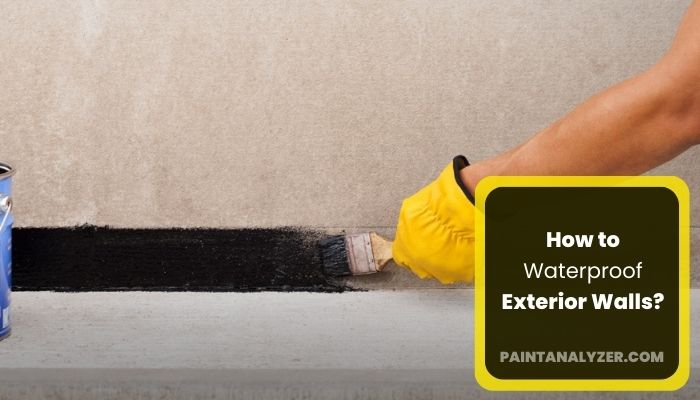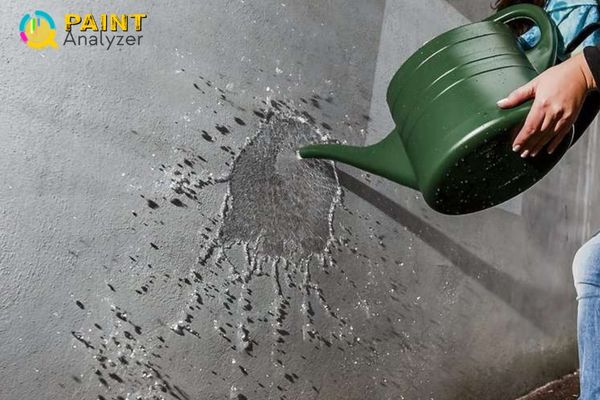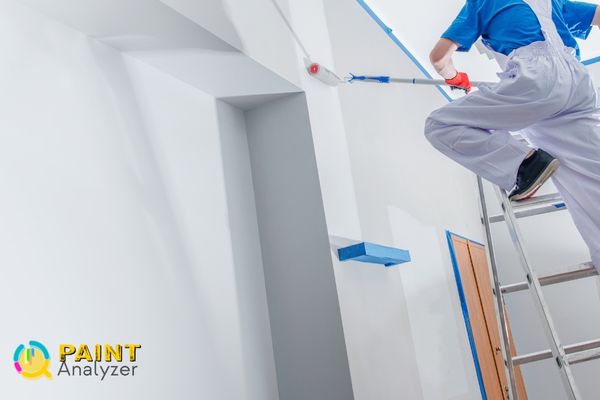Are you concerned about water damage to your home’s exterior walls? If so, you’re not alone. Waterproofing exterior walls is a common home improvement project. While it may seem like a daunting task, it’s actually not that difficult.
There are a number of different ways to waterproof exterior walls, and the method you choose will depend on the type of material your walls are made of. If your exterior walls are made of brick, stone, or concrete, you’ll need to use a waterproofing sealer like silicate based, and when the walls are made of wood, you’ll need to use a waterproofing paint.
Here, we’ll give you a step-by-step guide on how to waterproof exterior walls and what coating to use.

How to Waterproof Exterior Walls? A step-by-step guide
One of the best ways to protect your home from the elements is to waterproof your exterior walls. This will help to keep moisture out of your home and prevent water damage. Here is a step-by-step guide to waterproofing your exterior walls:
Step 1: Check up the walls
You need to do is check up on the condition of your walls. If they’re already in good condition, then you can move on to the next step. However, if your walls are cracked, crumbling, or otherwise in need of repair, you’ll need to take care of that before you can waterproof them.
Step 2: Choose the Right Waterproofing Product
When you are waterproofing your exterior walls is to choose the right waterproofing product. There are many different products on the market, and it’s important to choose one that is designed for the material your walls are made of. If your walls are made of brick, stone, or concrete, you’ll need to use a waterproofing sealer. If your walls are made of wood, you’ll need to use a waterproofing paint.
Step 3: Prepare the Surface
Once you’ve selected the right waterproofing product, the next step is to prepare the surface. If you’re using a sealer, you’ll need to clean the surface of your exterior walls with a power washer. If you’re using a waterproofing paint, you’ll need to sand the surface of your exterior walls.
Step 4: Apply the Waterproofing Product
After the surface is prepared, it’s time to apply the waterproofing product. If you’re using a waterproofing sealer, you’ll need to apply it with a brush or roller. If you’re using a waterproofing paint, you can apply it with a brush, roller, or sprayer.
Step 5: Let the Waterproofing Product Dry
After you’ve applied the waterproofing product, you’ll need to let it dry. If you’re using a waterproofing sealer, you’ll need to let it dry for 24 hours. If you’re using a paint, you’ll need to let it dry for 48 hours.
Once the waterproofing product is dry, you’ll be able to enjoy your waterproofed exterior walls!
How effective are Hydrophobic Paint Coatings in Waterproofing Exterior Walls?
Instead of using a sealer, you may choose to paint the brick or concrete. You may want to consider using a hydrophobic paint coating. These coatings are designed to repel water, and they can be very effective in waterproofing exterior walls.

Hydrophobic paint coatings are available in various formulations, and they can be applied to brick and concrete surfaces. There are many benefits to using it on exterior walls. Hydrophobic paint coatings can:
- Create a barrier against water infiltration
- Help prevent efflorescence
- Reduce the risk of mold and mildew growth
- Make it easier to clean dirt and grime off of surfaces
- Extend the life of paint and other finishes
So, if you are considering using a hydrophobic paint coating on your project, be sure to consult with a waterproofing expert to ensure that it is the best option for your needs.
What will happen if you don’t Waterproof the House from the outside?
Waterproofing the house from the outside is important to prevent water damage. If you don’t do it. You could be in for some serious trouble down the line. Here’s what could happen:
Water Damage
Water damage is one of the most common dangers of not waterproofing your home from the outside. If water is seeping into your home through cracks or holes in the foundation, it can cause all sorts of problems. It can lead to mold and mildew growth, which can be a health hazard. It can also cause structural damage to your home, weakening the foundation and making the whole building less stable.
Pest Infestations
Pests can easily get into your home if there are cracks or holes in your foundation. Once they’re in, they can be very difficult to get rid of. Not only are they a nuisance, but they can also carry diseases that can be harmful to humans.
Higher Energy Bills
Heat and cold can quickly escape through foundation cracks and gaps if your home is improperly waterproofed. This implies that your heating and cooling system will need to work harder to keep your home’s interior at a comfortable temperature. Higher energy costs and, in severe circumstances, damage to your HVAC system can result from this.
Reduced Property Value
If your home is not waterproofed, it will be less valuable than a home that is. This is because water damage, pest infestations, and energy efficiency problems can all make a home less desirable. If you ever decide to sell your home, you will likely get less money for it if it is not properly waterproofed.
Will waterproofing exterior walls also help with soundproofing?
Yes, soundproofing paint for walls can help with both waterproofing and soundproofing exterior walls. By applying a soundproofing paint designed to reduce sound transmission, you can create a barrier that not only keeps moisture out but also minimizes noise intrusion, providing a dual benefit for your exterior walls.
How can You Waterproof a Foundation Exterior Wall?
One of the best ways to waterproof an exterior foundation wall is to use a product called Foundation Armor. This product can be applied directly to the foundation wall and will create a barrier that will prevent water from seeping through.

It is important to ensure that the foundation’s surface is clean and free of debris before applying the Foundation Armor. Once the product has been applied, it will need to be cured for 24 hours before it is fully effective.
The best solution to Waterproof Exterior Walls from the Inside
Conclusion
Waterproofing exterior walls is an important home maintenance task that will protect your home from water damage. There are a number of different ways to waterproof exterior walls, and the best method for your home will depend on the materials your home is made of and the climate you live in.
Hydrophobic paint coatings are one effective waterproofing method, but there are several other options to choose from. If you don’t waterproof your home from the outside, you could be at risk for water damage to your foundation or other parts of your home. Be sure to research the best waterproofing method for your home and climate to keep your home in good condition for years to come.
